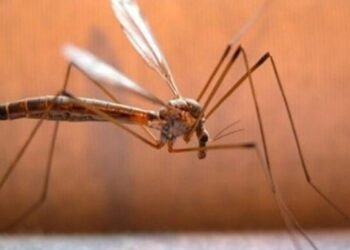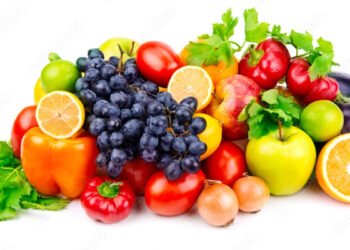Diabetes is a silent but serious threat to global health, affecting over 422 million people worldwide. Often undiagnosed until complications arise, diabetes can lead to life-threatening issues like heart disease, kidney failure, vision loss, and nerve damage. With its prevalence rising each year, especially in low- and middle-income countries, diabetes demands urgent attention for prevention, early detection, and effective management. Without swift action to address this growing epidemic, millions more will be at risk of serious health consequences that could be prevented with greater awareness and access to care.
By PC Bureau
November 14th marks World Diabetes Day, a global initiative dedicated to raising awareness about diabetes, a chronic health condition affecting millions worldwide. This year’s theme, “Breaking Barriers, Bridging Gaps,” highlights the importance of overcoming obstacles in diabetes care and ensuring equitable access to quality treatment for all.
Diabetes has emerged as a significant public health issue, particularly in low- and middle-income countries. The World Health Organization (WHO) estimates that 422 million people globally are living with diabetes, and this number is steadily increasing. The disease is a major cause of death, with 1.5 million fatalities attributed to diabetes annually.
A crucial aspect of diabetes management is dietary control. Certain foods can trigger rapid spikes in blood sugar levels or contribute to insulin resistance.
Food to avoid
1. Sugary Foods and Beverages
- Examples: Soda, fruit juices with added sugar, energy drinks, candy, desserts like cakes, pastries, and ice cream.
- Why Avoid: These items contain high amounts of simple sugars, leading to rapid blood sugar spikes.
2. Refined Carbohydrates
- Examples: White bread, white rice, pasta, sugary cereals, and other refined grain products.
- Why Avoid: Refined carbs have a high glycemic index, which can raise blood glucose levels quickly.
3. Fried and Processed Foods
- Examples: French fries, fried chicken, chips, and processed snacks.
- Why Avoid: These foods are often high in unhealthy fats, which can increase inflammation and insulin resistance.
4. High-Fat Meats and Processed Meats
- Examples: Bacon, sausage, hot dogs, and fatty cuts of red meat.
- Why Avoid: These foods are high in saturated fats, which can contribute to insulin resistance and heart disease.
5. Full-Fat Dairy Products
- Examples: Whole milk, full-fat cheese, cream, and butter.
- Why Avoid: Full-fat dairy is high in saturated fats, which can increase insulin resistance.
6. High-Glycemic Fruits
- Examples: Pineapple, watermelon, overly ripe bananas, and certain dried fruits like raisins and dates.
- Why Avoid: These fruits have higher sugar content and can lead to quicker blood sugar spikes.
7. Sugary Condiments and Sauces
- Examples: Ketchup, barbecue sauce, certain salad dressings, and syrups.
- Why Avoid: These items often contain added sugars that contribute to high blood sugar.
8. Baked Goods and Sweets
- Examples: Cookies, donuts, muffins, and pastries.
- Why Avoid: These foods are high in sugar and refined flour, which can cause blood glucose spikes.
9. Alcohol (in excess)
- Examples: Beer, sweet wines, cocktails with sugary mixers.
- Why Avoid: Alcohol can interfere with blood sugar levels and lead to both hypoglycemia and hyperglycemia, especially when consumed in excess.
10. Trans Fats
- Examples: Margarine, shortening, and foods made with hydrogenated oils like certain baked goods and fast foods.
- Why Avoid: Trans fats increase insulin resistance and raise “bad” cholesterol levels, which can be harmful for people with diabetes.
General Tips:
- Check labels for hidden sugars (look for words like fructose, sucrose, and corn syrup).
- Choose whole grains over refined carbs.
- Opt for healthy fats like olive oil, nuts, and seeds.
- Practice portion control with higher-carb foods.
What food to take in diabetes
A diabetes-friendly diet focuses on foods that help regulate blood sugar levels and improve insulin sensitivity. Here are some of the best options:
1. Leafy Greens
- Examples: Spinach, kale, Swiss chard, collard greens.
- Benefits: Low in carbohydrates and high in fiber, vitamins, and minerals. They also contain antioxidants that help reduce inflammation.
2. Whole Grains
- Examples: Quinoa, brown rice, oats, barley, and whole-grain breads.
- Benefits: Whole grains have a lower glycemic index and are high in fiber, which helps regulate blood sugar levels.
3. Lean Proteins
- Examples: Chicken breast, turkey, tofu, tempeh, eggs, and fish.
- Benefits: Protein has minimal impact on blood sugar levels and helps keep you feeling full, which can prevent overeating.
4. Fatty Fish
- Examples: Salmon, mackerel, sardines, trout.
- Benefits: Rich in omega-3 fatty acids, which support heart health, reduce inflammation, and may improve insulin sensitivity.
5. Nuts and Seeds
- Examples: Almonds, walnuts, chia seeds, flaxseeds, and pumpkin seeds.
- Benefits: High in fiber, healthy fats, and magnesium, which can help control blood sugar and support heart health.
6. Non-Starchy Vegetables
- Examples: Broccoli, cauliflower, peppers, cucumbers, and zucchini.
- Benefits: Low in carbohydrates and calories, non-starchy vegetables are high in fiber, vitamins, and minerals. They also have a low impact on blood sugar levels.
7. Berries
- Examples: Blueberries, strawberries, raspberries, blackberries.
- Benefits: Berries are high in fiber and antioxidants but low in sugar compared to other fruits, making them a good choice for controlling blood sugar.
8. Greek Yogurt
- Benefits: High in protein and probiotics, which support gut health and can help regulate blood sugar. Choose plain, unsweetened versions to avoid added sugars.
9. Avocado
- Benefits: Rich in healthy monounsaturated fats and fiber, avocado helps improve heart health and supports better blood sugar control.
10. Legumes
- Examples: Lentils, chickpeas, black beans, and kidney beans.
- Benefits: Legumes are high in protein, fiber, and complex carbohydrates, which release glucose more slowly and help prevent blood sugar spikes.
11. Cinnamon and Turmeric
- Benefits: Both spices have shown potential benefits for people with diabetes. Cinnamon can help lower blood sugar, while turmeric’s active ingredient, curcumin, has anti-inflammatory properties that support insulin sensitivity.
12. Sweet Potatoes
- Benefits: Compared to regular potatoes, sweet potatoes have a lower glycemic index and provide fiber and essential nutrients like vitamin A.
General Tips:
- Focus on fiber-rich foods: Fiber slows down digestion and helps regulate blood sugar levels.
- Choose healthy fats like olive oil, avocados, and nuts to enhance satiety and support heart health.
- Practice portion control with carbohydrates, even complex ones, to maintain steady blood sugar levels.
- Stay hydrated with water and unsweetened teas to support metabolism and avoid sugar-laden drinks.
Sticking to whole, unprocessed foods and balanced meals can help in managing diabetes and maintaining stable blood sugar levels throughout the day.
Symptoms of diabetes
Diabetes symptoms can vary depending on the type of diabetes, but here are the most common symptoms:
1. Frequent Urination (Polyuria)
- Elevated blood sugar levels cause the kidneys to work harder to filter and absorb excess glucose, leading to frequent urination.
2. Increased Thirst (Polydipsia)
- Frequent urination leads to dehydration, causing excessive thirst as the body tries to replace lost fluids.
3. Extreme Hunger (Polyphagia)
- With insulin resistance or insufficient insulin production, cells can’t take in glucose for energy, causing persistent hunger as the body seeks energy.
4. Unexplained Weight Loss
- Even though one may be eating more, the body begins to break down muscle and fat for energy when it can’t use glucose, leading to weight loss.
5. Fatigue and Weakness
- When the body isn’t able to use glucose efficiently, cells are deprived of energy, causing persistent tiredness and weakness.
6. Blurred Vision
- High blood sugar levels can cause swelling in the eye lenses, leading to blurred or distorted vision.
7. Slow Healing of Cuts and Wounds
- Elevated blood sugar affects blood flow and the body’s natural healing processes, causing slow wound healing.
8. Frequent Infections
- People with diabetes may experience frequent infections, such as skin infections, urinary tract infections, and yeast infections, as high blood sugar weakens the immune system.
9. Tingling, Numbness, or Pain in Hands and Feet
- High blood sugar over time can lead to nerve damage (diabetic neuropathy), causing sensations of tingling, numbness, or pain, especially in the extremities.
10. Darkened Skin Patches (Acanthosis Nigricans)
- Some people with diabetes develop dark, velvety skin patches, typically around the neck, armpits, or groin. This can be a sign of insulin resistance.













